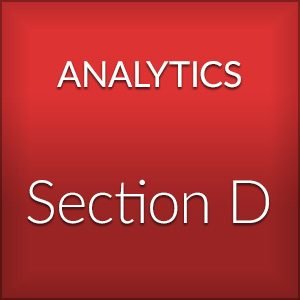Statistical Data Analytics… In Excel! – Complete Course
$929.00
Statistical Data Analytics… In Excel! Full course which includes the following 7 course modules.
- Section A: The Audit Risk Model and Why Use Analytics?
- Section B: The Six Levels of Analytical Procedures
- Section C: Simple Linear Regression
- Section D: Setting Bounds (Constructing Prediction Intervals) for Regression
- Section E: Noise Due to Data Sub-Populations and Lagging.
- Section F: Curve Linear Regression
- Section G: Analytics for Fraud, Waste and Abuse
Description
This course contains the following individual modules.
Section A: The Audit Risk Model (a.k.a., The Rosetta Stone) and Why Use Analytics?
Learn how the audit risk model (50 years young!) quantifies the audit process. Remember it?? It encourages efficiency and effectiveness… plan more, and audit way, way less! You will find the different costs of evidence and their impact on your audit efficiency staggering! Find out why you need to maximise the use of analytics in your audit programs.
Estimated time to complete: 45-60 mins (interactive with quizzes).
Section B: The Six Levels of Analytical Procedures
Can you name the globally agreed-upon six (6) procedures? There are analytics and there are ANALYTICS. Are you maximising your use of the most efficient form of audit test? This is not about running scripts over data, this is about true analysis that turns data into information.
Estimated time to complete: 75-90 mins (interactive with quizzes).
Section C: Simple Linear Regression
Remember regression analysis from college/university? You were taught the math rather than how to apply it to the real world. Learn how this mathematical tool will help you audit smarter by quickly and efficiently identifying outliers, targeting your testing and thus saving you valuable audit time and money.
Estimated time to complete: 100-115 mins (interactive with quizzes).
Section D: Setting Bounds (Constructing Prediction Intervals) for Regression
Now that you know how to run regression in an audit context, learn how to build statistical bounds and add benchmarks to your analysis. Why do this? Eliminate the need for judgment calls or grey areas by statistically defining outliers and being able to put some math into your conclusions. When was the last time you could start your report with the words “I am 95% confident that… “.
Estimated time to complete: 75-90 mins (interactive with quizzes).
Pre-requisite knowledge: It is assumed you are familiar with the concepts of Section C before completing this section.
Section E: Noise Due to Data Sub-Populations and Lagging.
Let’s address some common complexities that occur when you run regression in the real world. Reality is that you don’t always get a nice, neat looking analysis. Learn how to identify and address what the statisticians call ‘noise’ in the data, i.e. sub-populations and the effect of time lag/time lapse on your data.
Estimated time to complete: 60-75 mins (interactive with quizzes).
Pre-requisite knowledge: It is assumed you are familiar with the concepts of Section C & D before completing this section.
Section F: Curve Linear Regression
Let’s address another complexity that can occur when you run regression in the real world – not all data is linear. Learn how to run regression where relationships in your data are non-linear.
Estimated time to complete: 30-45 mins (interactive with quizzes).
Pre-requisite knowledge: It is assumed you are familiar with the concepts of Section C, D & E before completing this section.
Section G: Analytics for Fraud, Waste and Abuse
Learn what the research shows about how fraud is found, and perform case studies demonstrating how regression can be used as an advanced analytical tool to perform gap analysis, to reconstruct questionable or missing source data and to identify systematic fraud.
Estimated time to complete: 115-130 mins (interactive with quizzes)
Pre-requisite knowledge: It is assumed you have completed Sections C and D before commencing Section G.
This course was developed in the USA, however it does include reference to equivalent International Audit Standards (ISA’s) that have been adopted by other countries.





